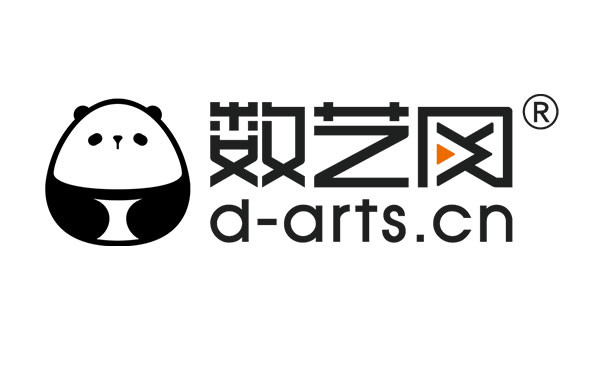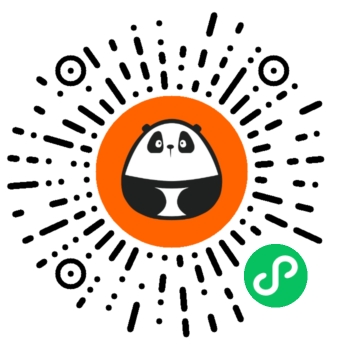- 0
- 0
- 0
分享
- When Art Meets Science | The CMA Lab of HKUST (GZ)
-
2024-01-30
“Art creation and visual communication are carried out in the exchange and collision of art and tech with social impact for the public to understand and enrich their lives, environment and communities.”
—— Mission of CMA
Chicago Daily Tribune, March 14, 1930
Throughout history, the encounter of technology and art has given rise to countless unforgettable moments. Consider March 13, 1930, as a prime example — a day that could be deemed pivotal for the artist Alexander Calder, coinciding with the announcement of the discovery of Pluto.
Discovery of the Planet Pluto
© Lowell Observatory Archives
On February 18, 1930, astronomer Clyde Tombaugh scrutinized two photos capturing over 150,000 starry dots. In this sea of cosmic brilliance, he pinpointed a subtle movement, uncovering the elusive “Planet X” hidden amidst the celestial expanse — the now-recognized Pluto. The cosmos, with its boundless vastness, conceals a reality forever beyond our reach in its endless shimmer. Yet, the mystery it presents sparks an infinite realm of imagination. The discovery of Pluto plunged Calder into an all-encompassing fascination with the universe.
Alexander Calder
A Universe, 1934
© 2024 Calder Foundation, New York / Artists Rights Society (ARS), New York
Afterward, he delved into crafting a series of “mobiles” known for their sleek and weightless appearance. These sculptures gracefully floated and shifted with the air, achieving a dynamic equilibrium by playing with the gravitational forces in different sections. Occasionally, he added complex kinetic devices, resulting in what seemed like unpredictable and cyclical movements. In 1934, he gave life to A Universe, featuring a small red sphere and a larger white one, subtly hinting at planets. These spheres moved along curved wire paths at varying speeds, completing a full cycle in forty minutes.
Herbert Matter
Excerpts from Works of Calder, 1950
© The Museum of Modern Art, New York, 1951
This creation left an enduring impression on none other than Albert Einstein. Rumor has it that, during its MoMA exhibition, Einstein stood mesmerized in front of the slowly moving spheres for the entire 40-minute cycle, caught in the enchantment of this captivating artwork. Throughout history, there have been countless moments like these, and undoubtedly, the future holds even more. If we envision the development of science and art as two parallel paths, echoing the sentiments of the French writer Gustave Flaubert, the farther, the art becomes more scientific, and science more artistic: having parted at the base, they will meet someday at the summit.
Neri Oxman's Krebs Cycle of Creativity III, 2016 and Walter Gropius' Bauhaus Curriculum, 1922.
Graphics: FAY Design. © Neri Oxman
Nowadays, the challenges we’re dealing with are getting more intricate by the day. At the same time, cutting-edge digital tech like quantum info, big data, AI, and blockchain is shaking up how we produce stuff and innovate, paving the way for fresh, cross-disciplinary fields. The campus offers a unique environment for the extensive exploration of the complex interplay of technological, social, and environmental systems that enhance the quality of urban life.
The Hong Kong University of Science and Technology (Guangzhou) is all about tapping into the development scene of the Greater Bay Area, and leverages its robust mainland supply chain network to form a unified and complementary university system with its Hong Kong campus. It is dedicated to transcending traditional boundaries, venturing into new realms of knowledge and research to address the evolving needs of a broader society.
Against this backdrop, the Computational Media and Arts building (CMA) aims to blend cutting-edge computing media technology with artistic innovation, projects, and research in a creative environment. Through a series of labs and studios, the hub seeks to foster creativity and teamwork, all while ensuring a conducive setting for independent teaching and learning. So, how will VAVE unleash the potential of space without compromising the autonomy of teaching functions while encouraging interdisciplinary collaboration and communication?
We believe the key lies in leveraging spatial connections – at transition points, around the bends, even in those spots that seem kind of minor. It’s about creating experiences that bring a bit of spontaneity and surprise, whether through physical links or more abstract connections. By exploring the possibilities of connections, we aim to facilitate collisions and interactions of experimental elements, encouraging boundary-crossing exploration and embodying the experimental spirit that sheds light on societal realities.
We’re taking a fresh look at the functional needs, tech gear, usage scenarios, and how open it should be of each lab. A lab doesn’t have to be this totally closed-off space for internal exploration only – it can morph into a creative community with diverse setups. It’s a hub that links up more people, offering varied thinking and interdisciplinary opportunities. The goal is to break free from the confines of labs and classrooms, making research and learning activities extend beyond, so students can build game-changing, lifelong relationships with the university.
As we dive deeper into the process of refining the layout of the lab combinations, we’re exploring diverse ways to shape the space – using things like movable dividers, glass partitions, and media elements to keep things interesting. Picture it like a space that can transform in various ways, throwing in twists, breakthroughs, and open spots ready for some unexpected use. Ultimately, our goal is to ensure that each functional area can stand on its own while maximizing an open-use model to the fullest extent possible.
多用途区 Multi-purpose Zone & Reception
The Multi-purpose Zone & Reception is the hub of CMA. It’s the perfect spot to host a massive exhibition alongside the art installation area or take center stage for a live show in the XR zone, versatility at its finest.
艺术装置工作室 Art Studio + Workshop
Exhibition view of Body as the River God, Dec. 5–20, 2023
© Information Hub of HKUST (GZ)
Art Studio + Workshop is the space for learning, creating, and showcasing installation art, equipped with professional tools like robotic arms, 3D printers, vacuum forming machines, automatic plotters, laser cutters, and more. Yet, what truly steals the show is the spirit of exploration and creative freedom on display. Currently, several interdisciplinary workshops are already underway in this vibrant space.
虚拟制作工作室 Virtual Production Studio (XR Studio)
Virtual Production Studio (XR Studio) is a versatile lab, serving multiple purposes such as photography, film production, visual effects, real-time XR experience production, motion/performance capture, and stop-motion animation. The XR virtual production technology, in particular, harnesses the real-time rendering capabilities of computer engines, integrating various virtual solutions like VR and AR. It’s a next-gen virtual shooting technique that opens up endless possibilities for capturing more realistic virtual scenes.
虚拟现实实验室 AR, VR and AI+ Lab (MR Lab)
AR, VR and AI+ Lab (MR Lab) is dedicated to researching, designing, producing, testing, and experimenting with AR/VR/AI+ content.
动画实验室 Animation Lab
Animation Lab equipped with workstations and graphic tablets, this setup is ideal for every stage of animation and digital content production.
可视化实验室 HCI Visualization Lab
The HCI Visualization Lab serves as an all-in-one creative platform, encompassing functions like information visualization, graphic design, video editing, sound editing, and more.
可用性实验室 Usability Lab (UX Lab)
Researchers can utilize the observation room for studying, observing, and collecting data, particularly in conducting user experiments.
声音实验室 Sound Lab
The Sound Lab, linking the recording studio and control room, is designed for crafting immersive ambient sounds and delving into the study of acoustics aesthetics and musical expression.
委托方 Client
香港科技大学(广州)
The Hong Kong University of Science and Technology (Guangzhou)
概念与设计 Concept and Design
VAVE Studio
创意指导 Creative Direction
欧智文
技术指导 Technical Direction
付耀文
主创策划 Principle
王君辅、高想
空间设计 Space Designer
刘琴、张铧心、曾俞鸿、李鹏程
3D建模 3D Modelling
陈张程
客户经理 Account Manager
黄家慧
公共关系 PR Manager
杨始朝
搭建 Construction and Implementation
广州原点建设工程有限公司
面积 Size
1042 sqm
Copyright © 2013–2024 VAVE GmbH (VAVE Studio) All rights reserved.
VAVE is an association of companies consisting of 1VAVE Germany GmbH 2VAVE (Shanghai) Creative Design Co., Ltd. 3VAVE (Shenzhen) Creative Design Co., Ltd. 4VAVE Imagination (Shenzhen) Creative Technology Co., Ltd.
-
阅读原文
* 文章为作者独立观点,不代表数艺网立场转载须知
- 本文内容由数艺网收录采集自微信公众号VAVE STUDIO ,并经数艺网进行了排版优化。转载此文章请在文章开头和结尾标注“作者”、“来源:数艺网” 并附上本页链接: 如您不希望被数艺网所收录,感觉到侵犯到了您的权益,请及时告知数艺网,我们表示诚挚的歉意,并及时处理或删除。













